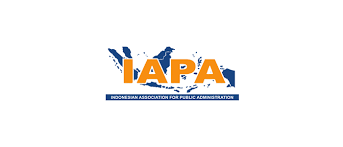Public Policy Innovation in Developing State Owned Business Agencies
Abstract
State-owned Enterprise (BUMN), as one of the pillars of the Indonesian economy, is guided by the outline of the 1945 contusion and the existence of private entities and cooperatives. In principle, the state's involvement in these activities reflects the substance of article 33 of the amendment of the 1945 constitution. One of the missions of BUMN is to serve by innovating. Public policy innovating is a necessity that must be done to overcome problems that exist in society. From the point of view of public policy studies and public services, it can be seen that the government has developed several SOE development strategies that lead the country to face charges in the organizational environment and also to reduce the negative label attached to the bureaucracy. One of the goals of public policy innovation is to improve the quality of public services. The obstacle faced in public policy innovation is that there is no comprehensive study on the development and sustainability of policy innovation in public services in Indonesia
References
Beal, P. (2008). A dictionary of English manuscript terminology: 1450 to 2000. Oxford University Press.
Dwiyanto, A. (2021). Mewujudkan good governance melalui pelayanan publik. UGM PRESS.
Gow, J. I. (2014). Public Sector Innovation Theory Revisited. 19, 22.
Hartley, Jean. (2005). Innovation in governance and public services: Past and present. Public Money and Management, 25(1), 27–34.
Hartley, John. (2005). Creative industries. Blackwell Publishing Ltd.
Huberman, M., & Miles, M. B. (2002). The qualitative researcher’s companion. Sage.
Islamy, I. (2000). Principles of State Policy Formulation. Jakarta: Bumi Aksara.
Islamy, M. I. (2000). Prinsip-Prinsip Kebijaksanaan Negara. Bumi Aksara, Jakarta.
Klein, K. J., & Knight, A. P. (2005). Innovation implementation: Overcoming the challenge. Current Directions in Psychological Science, 14(5), 243–246.
Klein, K., & Sora, J. (1996). The challenge of implementation innovation. The Academy of Management Review, 21(4), 1055–1080.
Moleong, L. J. (2019). Metodologi penelitian kualitatif.
Mulgan, G., & Albury, D. (2003). Innovation in the public sector. Strategy Unit, Cabinet Office, 1(1), 40.
Parasuraman, A., Berry, L. L., & Zeithaml, V. A. (1990). Guidelines for Conducting Service Quality Research. Marketing Research, 2(4).
Rogers, E. M. (1995). Diffusion of Innovations: Modifications of a model for telecommunications. In Die diffusion von innovationen in der telekommunikation (pp. 25–38). Springer.
Rogers, E. M. (2002). Diffusion of preventive innovations. Addictive Behaviors, 27(6), 989–993.
Srimulyo, K. (2001). MENAKAR PERAN BUMN DI ERA OTONOMI. 22.
Suwarno, Y. (2008). Inovasi di sektor publik.
Zeithaml, V. A., Berry, L. L., & Parasuraman, A. (1996). The behavioral consequences of service quality. Journal of Marketing, 60(2), 31–46.
Copyright (c) 2021 Indonesian Journal of Social Research (IJSR)

This work is licensed under a Creative Commons Attribution-ShareAlike 4.0 International License.
The Authors submitting a manuscript do so on the understanding that if accepted for publication, copyright publishing of the article shall be assigned/transferred to Indonesian Journal of Social Research (IJSR) Universitas Djuanda as Publisher of the journal. Upon acceptance of an article, authors will be asked to complete a 'Copyright Transfer Agreement'. An e-mail will be sent to the corresponding author confirming receipt of the manuscript together with a 'Copyright Transfer Agreement' form by online version of this agreement.
Indonesian Journal of Social Research (IJSR) Universitas Djuanda, the Editors and the Editorial Board make every effort to ensure that no wrong or misleading data, opinions or statements be published in the journal. In any way, the contents of the articles and advertisements published in the Indonesian Journal of Social Research (IJSR) Universitas Djuanda are sole and exclusive responsibility of their respective authors and advertisers.
Remember, even though we ask for a transfer of copyright, our journal authors retain (or are granted back) significant scholarly rights as mention before.
The Copyright Transfer Agreement (CTA) Form can be downloaded here: Copyright Transfer Agreement-IJSR 2020
The copyright form should be signed electronically and send to the Editorial Office e-mail below:
Dr. Rasmitadila, M.Pd (Editor-in-Chief)
Universitas Djuanda
Jl. Tol Jagorawi No.1, Ciawi, Kec. Ciawi, Bogor, Jawa Barat 16720
Website: http://journal.unida.ac.id/index.php/IJSR/index
Email: ijsr@unida.ac.id





4.png)



